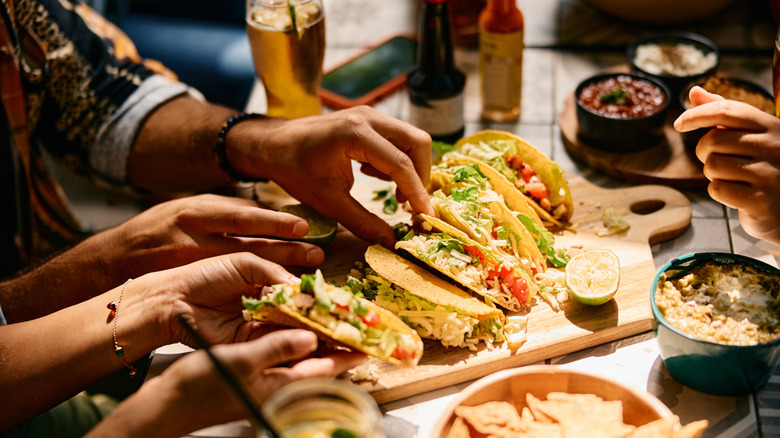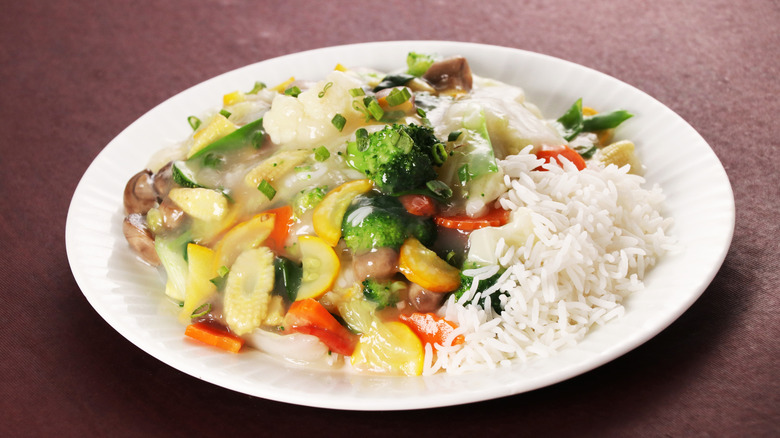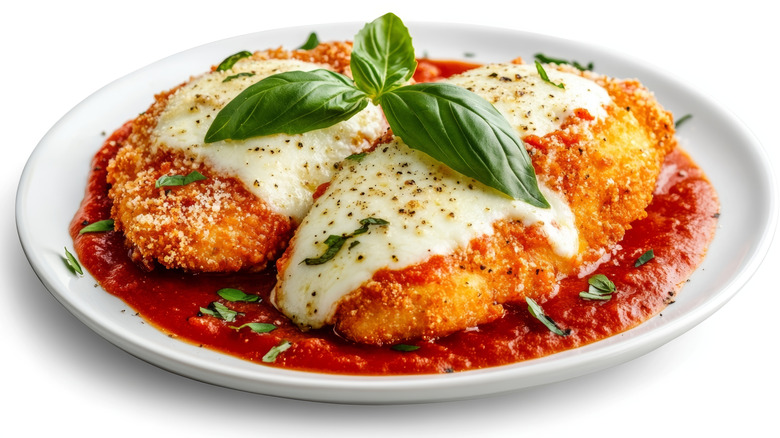Why You Should Stop Describing Restaurants As Authentic
It's not an uncommon sight on restaurant signs, or even on the menu: an assurance that the restaurant is serving "authentic" cuisine, be it Chinese, Italian, Mexican, or any other of the multitude of cooking styles to be found in American restaurants. It sounds promising enough; after all, "authentic" is almost a synonym for "real," and nobody wants fake food. The only problem is, when it comes to cuisine, the idea of "authentic" makes no sense.
Across times, cultures, and nations, cooking styles, ingredients, and traditions inevitably change. This is especially true for American food, which is often a hodgepodge of ingredients and influences from other countries and cultures. Even the quintessential apple pie, as in "as American as apple pie," is originally an English and Dutch dish; until Europeans arrived in North America, there were no apple trees other than those bearing sour crabapples, let alone apple pies.
Moreover, in the restaurant world, "authentic" can be a way of stating that their recipes haven't changed — but that's no measure of quality, however old school a restaurant's menu may be. Some of the most delicious foods are born out of change and innovation, from California-style pizza — which was invented in the late 20th century as California chefs became interested in using local produce as pizza toppings — to chocolate chip cookies being the result of a baker's experimental take on her usual chocolate cookies.
When authenticity became a vital ingredient in restaurant marketing
Did restaurants always try to lure in customers by boasting their authentic credentials? Well, not exactly. In a review of Netflix rom-com "Always Be My Maybe" for Eater, writer Jenny Zhang notes how "authenticity" has historically been used as a catch-all for informal, old-fashioned, restaurants, as well as those owned by minorities in the United States. This can be seen as a way of celebrating heritage or even personal nostalgia, as Zhang discusses, but it can also be a trap to keep chefs, especially immigrant chefs, from experimenting with formal dining or trying new flavor combinations.
The idea of authenticity has been persuasive in recent years, with chefs and diners alike drawn to the idea of food that was rooted in history. But even at the beginning, the idea was flawed — one of the earliest dishes to be dismissed as "inauthentic" was chop suey, a popular dish at Chinese restaurants across North America, and, at its core, a stir fry. While the name "chop suey" might be Chinese-American in origin, stir frying as a cooking technique has been used in China for centuries. The chop suey served in Chinese restaurants in the United States originated with Chinese immigrants in California in the early 20th century, who cooked local ingredients using techniques from China, creating a dish that's now over 100 years old, and arguably "authentically" Chinese-American.
These favorites may be inauthentic, but they're still delicious
Many beloved dishes, served at restaurants and plated up by home cooks, fail the arbitrary "authenticity" test but pass the taste test with flying colors. For instance, non-traditional chicken parmesan, a beloved staple on a sub or plated with spaghetti, and a favorite dish of President Joe Biden, didn't hail from Italy. Chicken parmesan originated in the United States, where Italian immigrants, who were newly successful enough to afford meat, adapted an Italian eggplant dish to the poultry version so many people enjoy today.
Fortune cookies, another "inauthentic" favorite, were actually first served by Japanese immigrants in the United States in the early 1900s. The cookies were served at both Japanese and Chinese restaurants for decades, and only became associated with Chinese restaurants exclusively during World War II, due to anti-Japanese prejudice leading to the internment of Japanese Americans.
The United States isn't the only place where "inauthentic" food is born and becomes a hit. While you may have seen chicken tikka masala on the menu at an Indian restaurant, it was actually most likely invented at an Indian restaurant in the 1970s in Glasgow, Scotland. Today, it's so beloved in the United Kingdom that it's actually edged out fish and chips (which also has immigrant origins, with Portuguese-Jewish fried fish meeting Belgian fried potatoes in Britain) as Britain's national dish.


